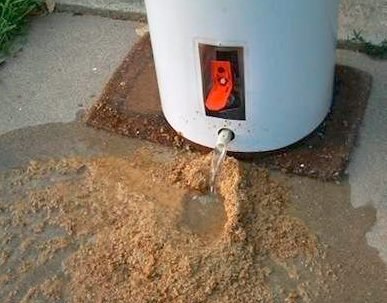Are you a newbie trying to find some information on how to flush a gas water heater? Water heaters, be it gas or electric, must be flushed periodically.
Why do water heaters need to be flushed? This article here will tell you everything you need about flushing water heaters, particularly the gas types. Let’s begin with the day’s topic without wasting even more of your time.
Why does the Water Heater Need to be Flushed?
Like any other human invention, water heaters are frail to prolonged usage and unwanted residual build-ups. Trust me; when I say unwanted, it is very unwanted.
You would not want to see it, and you would not want to touch it. I once saw a water heater flushed, and when I saw the residue building up in the place, my appetite suddenly turned low.
It is pretty disgusting, even more so if you leave your water heater unflushed for several years or days (you need to flush the thing once a year, after all. To prevent your water heater from breaking, that is). That residual build-up is mostly minerals, but not the kind that will fetch a high price in the market, so throw it away!
How to Flush the Water Heater?
Flushing any water heater is as easy as eating a hot apple pie in cold autumn ONLY IF you have the tool. Without the proper tool, flushing one is a chore. No one wanted to do a chore, even if it was simple.

Flushing Steps:
- Turn off the water heater’s gas or electric supply at the breaker box to ensure safety during flushing.
- Connect a garden hose to the drain valve at the tank’s bottom. Make sure to place the other end of the hose in an area that can safely receive the water.
- Open the drain valve to drain the water from the tank. Be prepared for the water to be hot and for sediment to come out with the water.
- After emptying the tank, turn the cold water supply onto the heater to help remove any remaining sediment by flushing the tank.
- Let the water flow until the water runs clear from the hose, indicating that most of the sediment has been flushed out.
- Close the drain valve, disconnect the hose, and turn the cold water supply back onto the water heater.
- Turn on the water heater’s gas supply or switch the breaker box back on. Remember to relight the pilot light if necessary.
- Check for leaks around the drain valve and ensure the water heater operates correctly.
Following these steps, you can effectively flush your gas water heater, removing unwanted sediment and improving efficiency. Regular maintenance, including annual flushing, is crucial for extending the life of your water heater and ensuring it provides hot water effectively.
Remember, flushing your water heater helps remove sediment and improves water flow and heating efficiency. It’s a simple yet effective way to maintain your water heater for years of reliable service.


